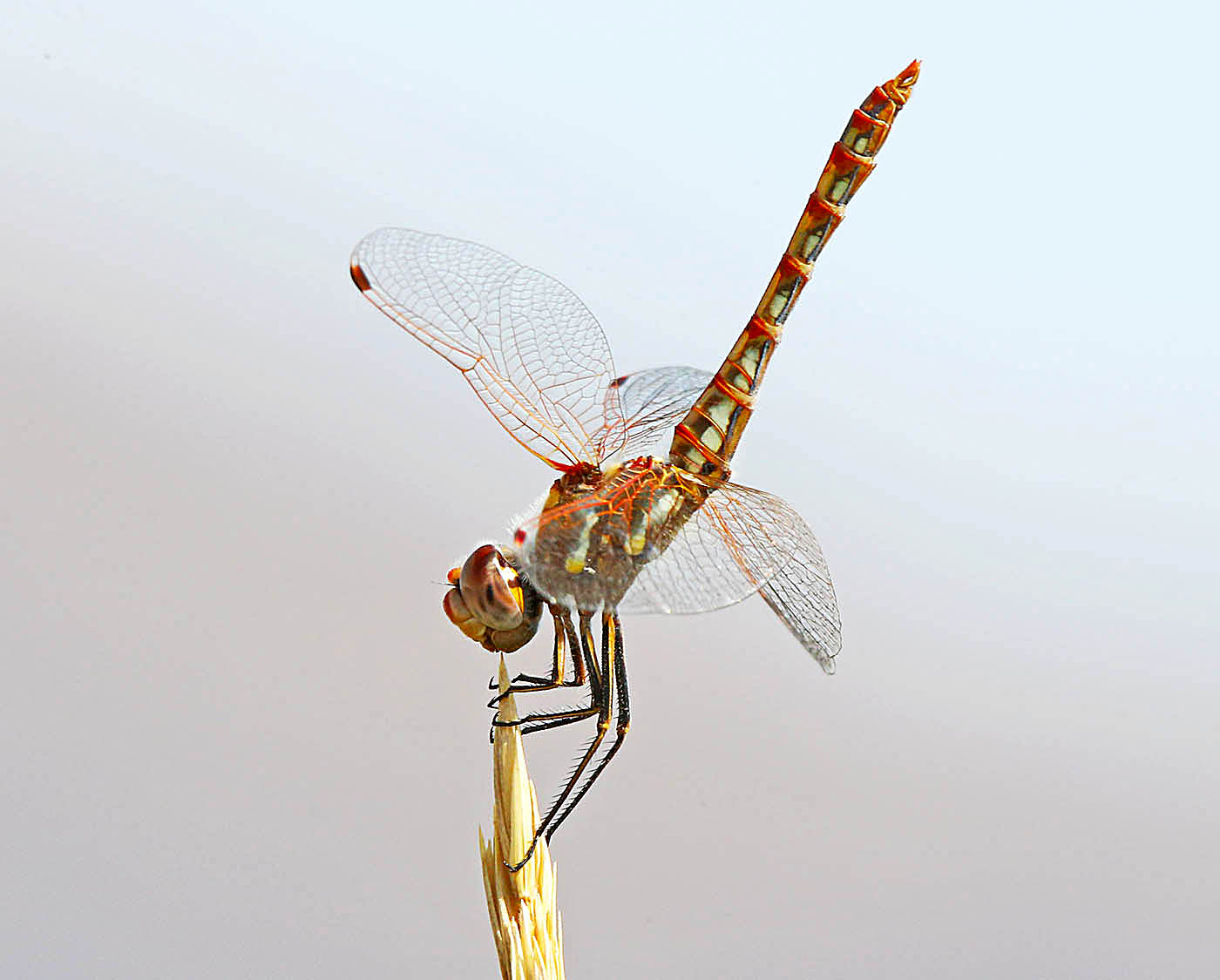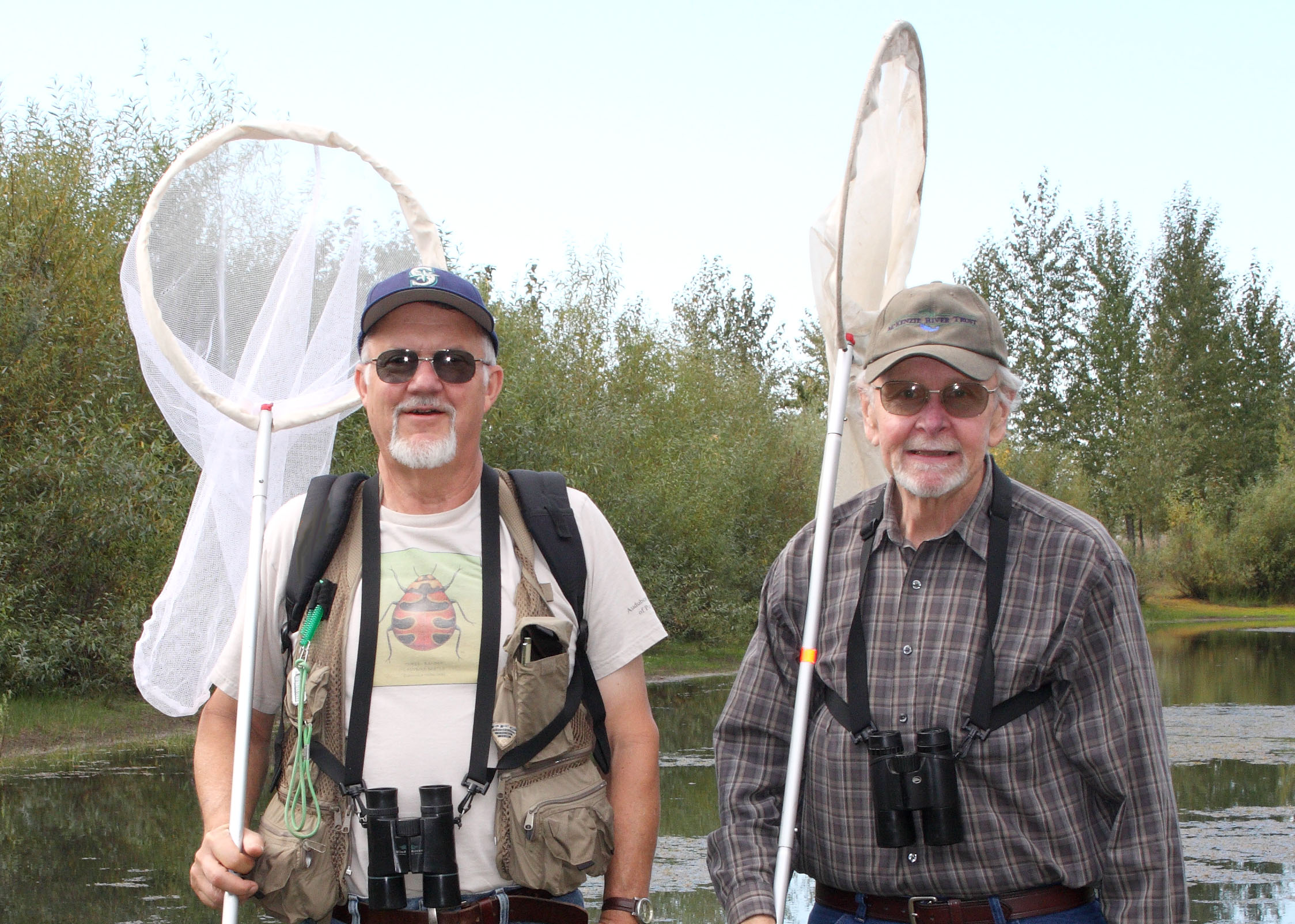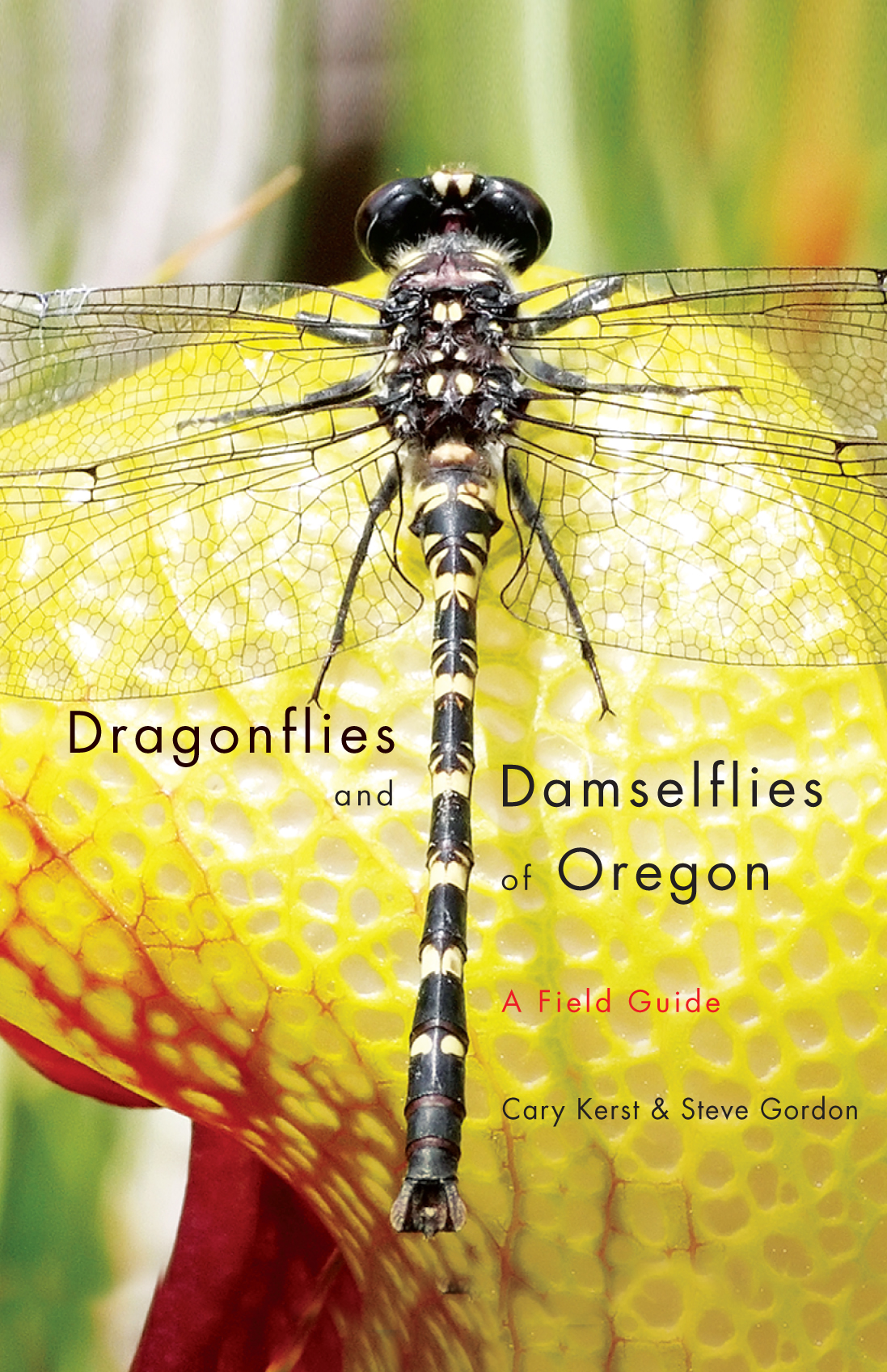A Facebook friend writes of spotting “thousands of red dragonflies at a beach south of Seal Rock,  all heading south and none stopping for anything.” In recent days, similar sightings have been reported in Cannon Beach, Neskowin, and other locales, from southwest Washington to the central Oregon coast. Dragonfly migration is underway.
all heading south and none stopping for anything.” In recent days, similar sightings have been reported in Cannon Beach, Neskowin, and other locales, from southwest Washington to the central Oregon coast. Dragonfly migration is underway.
Less heralded than the annual migrations of gray whales along the Oregon coast—a phenomenon that now has its own trademarked web site (Whale Watching Spoken Here) and a corps of hearty volunteers—dragonfly migration is no less spectacular. Timing and numbers vary year to year, but 2013 appears to be a major migration. At the onset of fall cold fronts, the main species involved, the Variegated Meadowhawk, seems to funnel to the coast and head south. But beyond that, little is known about these fall migrants.
“This is not only an amazing spectacle to witness but a great mystery even to scientists,” says Cary Kerst, co-author with Steve Gordon, of Dragonflies and Damselflies of Ore gon, the definitive field guide to the subject. “We don’t know where they are coming from or going or what prompts them to start moving.”
gon, the definitive field guide to the subject. “We don’t know where they are coming from or going or what prompts them to start moving.”
Scientists have tried various methods of tracking dragonfly migrations with little success. Now, a partnership has formed to solicit the public’s help to better protect and sustain this phenomenon. The Migratory Dragonfly Partnership offers an opportunity for people to collect and record dragonfly migration observations. Citizen scientists monitor the timing, duration, and direction of travel of migrating dragonflies, and note any additional behaviors observed in migratory flight such as feeding or mating.
Learning to identify the main migratory species of dragonflies is an essential first step in migratio n monitoring, and for Oregon there’s no better place to start than the Kerst and Gordon guide. It includes full color photographs of all species found in the state, along with helpful illustrations and charts showing important identification characteristics. The book also features descriptions of the thirty best sites in Oregon to observe these amazing insects, a useful tool for viewing uncommon species in spectacular settings.
n monitoring, and for Oregon there’s no better place to start than the Kerst and Gordon guide. It includes full color photographs of all species found in the state, along with helpful illustrations and charts showing important identification characteristics. The book also features descriptions of the thirty best sites in Oregon to observe these amazing insects, a useful tool for viewing uncommon species in spectacular settings.
With sufficient participation in migration monitoring, it’s not hard to imagine a future in which volunteers line Oregon dunes each fall wearing “Dragonfly Watching Spoken Here” t-shirts and introducing curious onlookers to the wonders of dragonfly migration.
--------
Images:
Variegated Meadowhawk oblisking (top), photo by Cary Kerst
Authors Steve Gordon and Cary Kerst (middle)
Related Titles

Dragonflies and Damselflies of Oregon
Growing interest in watching and identifying dragonflies and damselflies has sharpened the need for an authoritative resource like Dragonflies and Damselflies of Oregon, a definitive...
